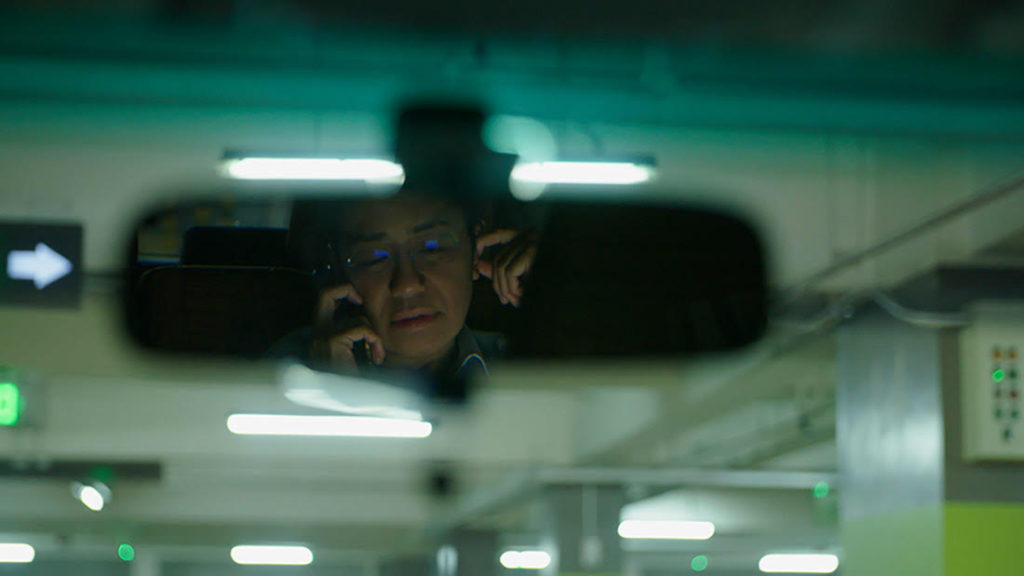Ramona S. Diaz’s award-winning films include “Imelda,” “The Learning,” “Don’t Stop Believin’: Everyman’s Journey,” and “Motherland.” “Motherland” premiered at the Berlin International Film Festival, and won a Special Jury Award at Sundance in 2017. The doc was also nominated for a Film Independent Spirit Award and a Peabody Award. Diaz was awarded a prestigious Guggenheim Fellowship in 2016, and is a current recipient of a United States Artists Fellowship.
“A Thousand Cuts” premiered at the 2020 Sundance Film Festival on January 25.
W&H: Describe the film for us in your own words.
RD: The film is about the erosion of democracy, and one woman’s story to hold power to account. It is an epic told through a tight frame.
W&H: What drew you to this story?
RD: I’ve built a career making films about the Filipino and Filipino-American experience. When I was finishing my last film, “Motherland,” I started seeing extremely disturbing photographs of President Duterte’s war on drugs on my Facebook page. I couldn’t turn away even if I had wanted to.
As a documentary filmmaker, I knew I needed to do something — at the very least, go on a research trip to Manila. One thing led to another, and about a year-and-a-half later, in mid-2018, I was in the Philippines conducting research, formulating the questions that needed to be asked, and looking for my story.
All the themes that I’ve explored in my previous films were present in this story: power and disempowerment, and how power is harnessed by charismatic individuals in the name of the people.
W&H: What do you want people to think about when they are leaving the theater?
RD: That fundamental rights we take for granted can be taken away without much resistance — with no drama at all, if we’re not vigilant. And that the Washington Post is right — democracy does die in darkness.
W&H: What was the biggest challenge in making the film?
RD: I followed many characters at the same time all over the Philippines during an election campaign. That was madness. Just the logistics of getting to places on short notice was challenging. Thank god I had a great team of field producers on the ground who managed to get us on and off planes without too much trauma.
The other challenge, as it always has been, is access. I wanted access to both sides of an unfolding story where the stakes were so high. Navigating access was challenging.
W&H: How did you get your film funded? Share some insights into how you got the film made.
RD: A combination of grants for early money, and investments for the bulk of production and post-production.
I knew if I did it right, I would be making an eerily timely film that would resonate universally. In a way, the content was responsible for the speed I was able to raise the money.
W&H: What inspired you to become a filmmaker?
RD: When I was growing up, I was enamored of moments in films. Not necessarily plot. I would often forget what films were about — or even how they ended — but I would always remember certain moments. Moments that would arise from clearly drawn out characters — the look of happiness or terror on a person’s face, the interplay of shadows in a scene, the feeling that swept you up in the moment.
So, I suppose my career has been about the search for those indelible moments that I hope to share with audiences.
W&H: What’s the best and worst advice you’ve received?
RD: Best advice: “No one knows anything. Just make your film.”
Worst advice: “The shorter the film, the better it is.” Well, not always.
W&H: What advice do you have for other female directors?
RD: Don’t follow trends. Let your story lead the way. Form will follow story.
That voice inside of you, that’s key. Listen to that. Always.
W&H: Name your favorite woman-directed film and why.
RD: It’s not possible to name just one favorite, but let’s try. When I was growing up in the Philippines, I adored the films of Marilou Diaz-Abaya, “Brutal,” “Mortal,” and “Karnal.”
Diaz-Abaya’s personal history closely paralleled mine. We both grew up, some will say, in a bubble of privilege in a country that was overrun by poverty, and still is. Diaz-Abaya made films about the marginalized; I felt the yearning in her films to immerse and dig deeply, and to understand the structures that enabled the inequity.
It was only years later that I understood her as a female director — understood the gaze, understood the lens in which she told her stories. More than class, maybe it was her gendered lens that I was attracted to.
W&H: What differences have you noticed in the industry since the #MeToo and #TimesUp movements launched?
RD: In practical terms, not much, really. However, the conversations that used to happen in the corners of darkened rooms are now being discussed openly. Maybe those are good baby steps?







